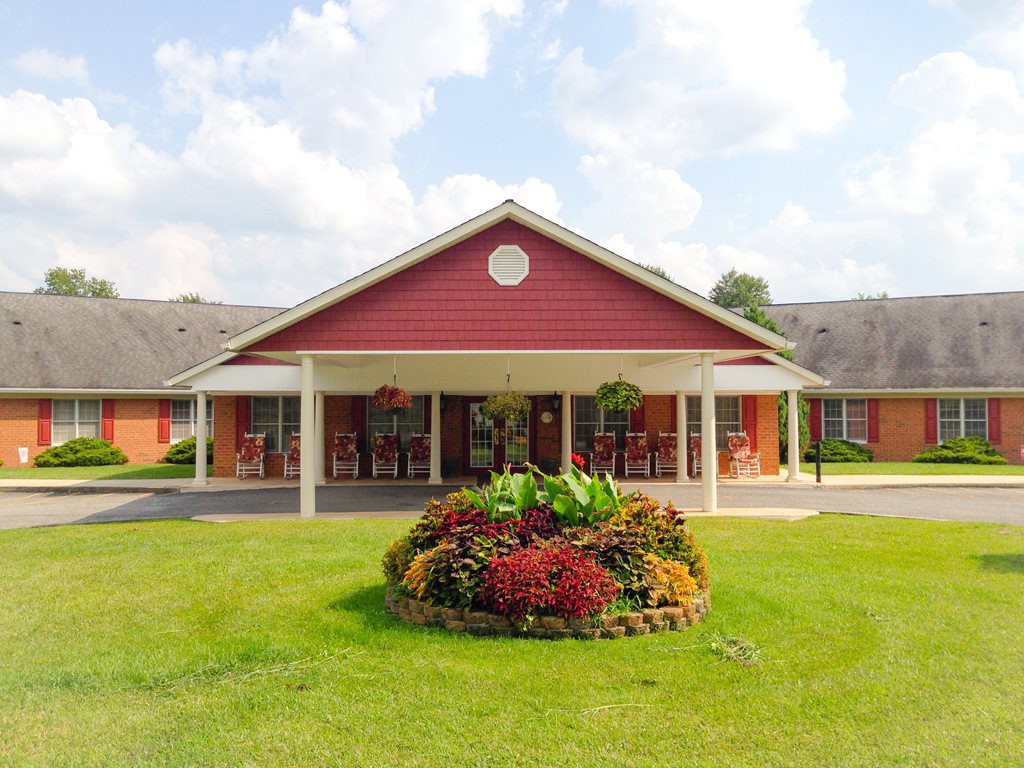- Types of Long Term Care Facilities
- How Much Does Assisted Living Cost?
- Covering the Cost of Care
- Choosing the Right Long Term Care Option
With people living longer than ever before, assisted living has become even more important. Many seniors reach a point in their lives where physical or neurological health issues prevent them from being able to live safely and comfortably on their own. The longer you live, the higher your chances of eventually needing to move into one of several different types of long term care facilities.
While long term care is available for people with all kinds of disabilities, it’s most commonly associated with seniors. Around 63% of long term care residents are over 65. Among people over 65, there’s a lifetime probability of 68% that at some point, the person will become unable to independently handle at least two activities of daily living (ADLs). This can include things like bathing oneself, preparing meals, and handling bills and other financial matters.
By 2050, the number of people in these facilities is expected to double. Many, many seniors will eventually need long term care. For themselves and their families, one of the biggest issues at play is cost. Assisted living can be quite costly, so it’s important for seniors — as well as anyone else planning for their eventual retirement — to have a game plan for covering those costs.

Types of Long Term Care Facilities
There are several different types of long term care options, which range from mostly independent living with a little bit of help here and there, to intensive around-the-clock nursing care from medical professionals. The costs can differ from one another, and vary considerably even within the same facility type.
- Senior Apartments. These age-restricted housing developments are for seniors aged 55 and up, and often come with quite a few amenities. The apartments tend to have community amenities such as clubhouses, fitness centers, swimming pools, and more. They are a great option for socially-inclined seniors who are ready to downsize their home or relocate.
- Independent Living. These 55+ communities are meant for seniors who are in good health and can live on their own without personal care needs or medical assistance. Independent living communities will have a variety of different amenities as well as services such as dining services, social activities and programs, laundry service, and more.
- Assisted Living Facilities. These facilities offer several levels of care and assistance for residents, but aren’t necessarily equipped for intensive nursing care for seniors with serious health issues. With plenty of ways to stay busy and socialize with other seniors, this can be a great fit for people who can no longer live completely independently, but who need assistance with personal care needs such eating, walking, bathing, and such tasks.
- Memory Care Homes and Alzheimer’s Care Homes. Memory Care facilities offer special services that cater to seniors with age-related or neurodegenerative memory loss and cognitive impairment such as dementia and Alzheimer’s disease. The facility is designed for the resident’s safety and wellness, while its therapy, activities, and programs are designed to slow the disease’s progression.
- Residential Care Homes. These homes will have fewer residents (around 6 residents) than an assisted living facility. Aides will assist the residents with personal care tasks such as eating, walking, bathing, and more. The homes provide a more intimate space and community for its senior residents.
- Nursing Homes or Skilled Nursing Facilities. These homes are designed for patients who need intensive assistance and around-the-clock access to skilled medical care. Residents often include both elderly people, and people under 65 with physical disabilities or chronic illnesses that prevent them from living independently.
It’s relatively common for people to eventually need a progressively higher level of care as they age. This is especially true of patients with neurodegenerative disorders like Alzheimer’s, or other health conditions known to worsen over time. For example, a resident in a standard assisted living home who survives a devastating stroke may need to relocate to a skilled nursing facility due to acute and debilitating brain damage and resulting impairment.
When planning for retirement, it’s always a good idea to account for the possibility that you may eventually not be able to live independently. It’s not necessarily pleasant to think about, but it’s an important reality. An Alzheimer’s diagnosis or a neurovascular emergency could throw a wrench into your retirement plans, even if you remain in good health for most of your later life up until then.

How Much Does Assisted Living Cost?
Unfortunately, assisted living facilities can be relatively costly. Even retirement communities, where you simply own a home in an age-restricted neighborhood subdivision open to people over fifty-five, you’re looking at homeowner’s association or condo association fees that can be a bit higher than in most places. The cost can often depend on the level of care you need, and in the case of severe medical problems, the cost can be very high.
For the last five years of life for seniors with severe dementia, total end of life care costs can be an average of over $340,000. While quite a bit of this can be covered through Medicare, private health insurance, and long term care insurance, it’s not uncommon for most of a senior’s estate to ultimately be spent on these kinds of costs.
Per the source above, assisted living costs can also vary geographically. In Manhattan, where the cost of living is very high, the average annual cost of a private room in a nursing home is over $164,000. Meanwhile, in most of Louisiana, where the cost of living is more manageable, the average cost is closer to $64,000. Naturally, that’s also quite expensive overall.
Part of the problem is that in many cases, these costs are difficult to manage out of pocket. Despite a median nursing care cost of over $92,000 per year, the average annual income of an individual over 65 is only $22,887.
The good news is that on average, people pay around 21% of the total cost of long-term care out of pocket. That means that an average of 79% is covered by various types of insurance, meaning that the actual financial burden facing seniors and their families isn’t nearly as astronomical as the actual total cost of care. To get a more specific and customized estimate of how much long term care is likely to cost in your area — as well as the costs of in-home care for comparison — you can use this online calculator.
Covering the Cost of Care: Insurance and Other Considerations
With the exception of high net worth individuals, it usually isn’t feasible to cover 100% of the costs of long term care out of pocket. Fortunately, you usually won’t have to. This is a good thing, because currently, most American seniors struggle to afford these costs, which can be nearly $4,000 per month.
Fee Structures for Assisted Living
Assisted living facilities can have either all-inclusive pricing, or fee-for-service pricing that adds extra costs for a variety of optional additional services. In most cases, residents have a choice of either option. If the person needs all of those services, the all-inclusive option is usually less expensive overall. If not, it can be less costly to use a fee-for-service structure.
Here’s an overview of the fees you can generally expect to pay.
- A one-time upfront fee. This usually takes the form of a reservation deposit or community fee. It’s usually a couple thousand dollars, and paying it will reserve your room in the facility.
- A monthly base fee. This is essentially your “rent’ when you’re living in a senior care facility full time.
- A monthly care services fee. This additional fee often follows a tier structure, varying with which services you need. The services generally include assistance with various activities of daily living (ADLs), such as bathing and personal hygiene, meal preparation, and dressing oneself. As such, the cost is higher for residents with a higher degree of disability. Assessing the actual amount of care the person will need is an important part of the process of moving into a senior care facility.
- Medication management and other ancillary services. Many seniors need assistance taking their medications in the right doses and at the right times. These and other additional services may incur their own separate fees.

Using Medicaid to Cover Assisted Living Costs
There are several types of Medicaid programs that can help cover the cost of senior care. The most common are Medicare Waivers, of which there are two main types: 1915 Waivers, and Home and Community Based Services (HCBS) Waivers. These vary in availability from state to state, but are available in more states than not. There are a few states that have opted instead to move toward a “Medicaid managed care model” with a different overall structure and different sets of regulations.
There are forty-three states that have assisted living benefits under Medicaid. For assisted living that isn’t skilled nursing care, there’s been a general trend toward states increasing the amount that can potentially be covered. With that said, the benefits can be quite different from one state to another.
There’s a common misconception that Medicare covers assisted living. It usually does not, and can only cover skilled medical care. So for many assisted living residents, it doesn’t cover many costs at all. It’s actually Medicaid that can help pay for assisted living, not Medicare.
Income and Savings
As we’ve mentioned, people usually pay an average of around 21% of the total cost of assisted living on their own, out of pocket. This is where your own savings — or assistance from a relative — will come in. You’ll need at least some money to cover this part of the cost.
There are also additional options that can help people with low income, below a certain threshold. These usually exist on a state level, so what’s available can vary depending on your location. You can find out more about what’s available in your state by using the HUD portal.
Long-Term Care Insurance
Another option for covering costs is long term care insurance. As its name suggests, it’s a type of insurance policy specifically for covering assisted living costs for seniors who can no longer continue to live independently. First introduced in the 1980s, it can cover many types and levels of care.
The Federal Health Insurance Portability and Accountability Act (HIPAA), passed back in 1996, gives certain federal tax advantages to individuals who have this type of insurance. Some states also confer additional tax benefits, adding some extra reasons for investing in a policy.
So should you get a long term care insurance policy? If so, when? This can depend on your age, your current state of health, your family history of medical problems during old age, and your income and assets. The premiums can be relatively high overall, and unfortunately, it isn’t always affordable for people for whom Social Security is their main source of current income. You should only buy a policy if you can afford the premiums for it.
Another caveat is that health problems can affect whether or not companies will be willing to insure you. Sadly, if a person already has pre-existing Alzheimer’s Disease, Parkinson’s Disease, or another serious health condition that affects the need for long term care, you usually won’t be able to buy a policy.
In many states, there are legal requirements for insurance agents to go through worksheets with you to assess whether buying long term care insurance is really the best option for you. For the most part, you should get a policy if:
- You have a good income and/or many assets, giving you a relatively high and stable net worth.
- You want to prevent the need to spend most or all of the value of those assets and savings on long term care expenses. (For example, you want to make sure you can leave an inheritance for your family.)
- You can comfortably afford the insurance premiums.
- You want to make sure you have as much choice as possible in where you receive long term care when that time comes.
In short, the cost to benefit ratio on long term care insurance policies is the most worthwhile for people who are relatively well off and stable financially.
If you do decide to go for it, there are several types of policies you can choose from.
- Individual policies. This option is by far the most common. These policies are sold directly to an individual.
- Employer policies. Some companies offer employees long term care insurance at a discount through group policies. In many cases, the medical requirements to qualify are relaxed in comparison to individual policies, making it easier to get coverage.
- State or federal government policies. If you’re employed in the public sector, you may qualify for coverage under the Federal Long Term Care Insurance Program. This applies to active and retired uniformed service members, US Postal Service workers, and many other types of government employees.
There are also a few other, less common variants, like association policies and policies included with some types of health insurance.
If you’re a good fit for long term care insurance, and you both qualify and can afford it, it’s one of the best ways to minimize out of pocket expenses if you find yourself in need of assisted living care.
Choosing the Right Long Term Care Option
Eventually, you’ll find yourself needing to make a decision — whether it’s for yourself, or for a parent or other older relative.
Determine Your Budget
As we’ve mentioned, there are quite a few different options that can go a long way toward covering a majority of the total costs. With that said, you still won’t have an infinite budget, and you may need to limit your options based on what you can reasonably afford.
Tour Different Facilities In Your Price Range
Within a given price range, the quality of facilities can vary quite a bit. We recommend touring assisted living centers in person, keeping an eye out for red flags and making sure that residents are taken care of properly.
There’s no way around it — assisted living facilities cost money, even those that cater to active and relatively healthy seniors who don’t need a very high level of medical care on a daily basis. Fortunately, there are several options you can use to minimize your out of pocket costs.
To read more on long-term care insurance or other senior articles, visit our Help & Advice page and our blog.






